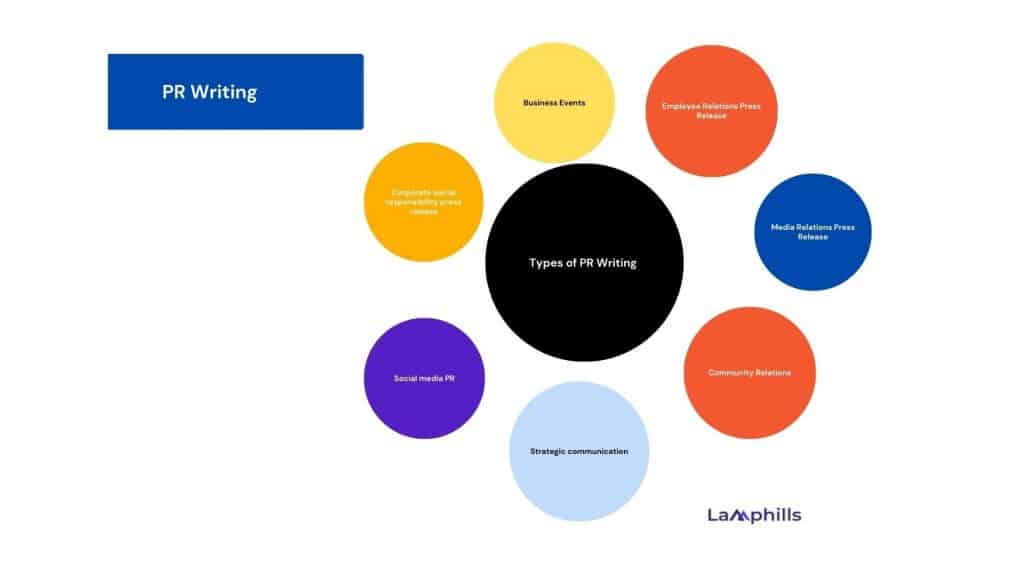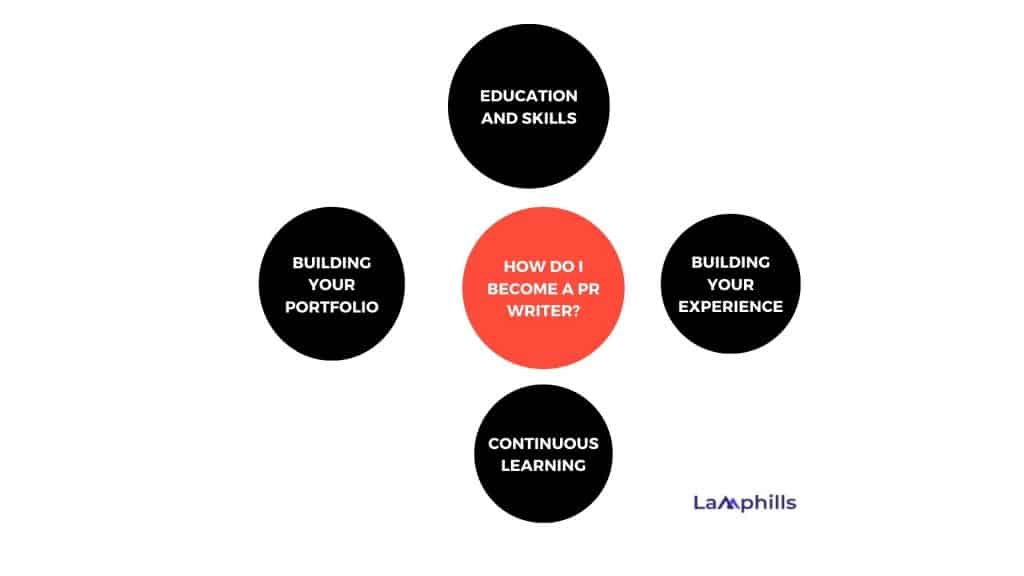Have you ever been frustrated after putting your heart and soul into a press release only to have it buried under an avalanche of online noise? Let’s face it: in today’s content-saturated world, breaking through the clutter and capturing media attention requires a unique set of skills that is the art of PR writing.
Now, I understand that some people see PR writing as a mysterious thing. But have no fear, my friends! As a PR professional writer, I’ve learned a few things about creating interesting content that gets noticed. So, get ready as I take you through PR writing!
Key Takeaways
Here are the 4 key takeaways:
- PR writing is essential for drafting clear, concise, and newsworthy messages that align with your target audience and grab media attention. It’s about building a brand reputation, promoting products or services, and ultimately achieving your business goals.
- PR writing encompasses various types such as press releases, blog posts, social media content, and more. Each type serves a unique purpose but shares the common goal of generating positive brand awareness and engagement.
- Seven writing secrets provide actionable insights for crafting PR content that captures media attention. From knowing your audience and focusing on newsworthiness to offering strong visual hooks and compelling headlines, these strategies can elevate PR efforts and drive meaningful results.
- The article concludes with a roadmap for aspiring PR writers. It highlights the importance of education (formal or through courses), building experience (internships, entry-level jobs, freelancing), continuous learning (industry resources, staying updated), and creating a strong portfolio showcasing your best work and results.
What is PR Writing
PR writing is the art of creating convincing and engaging content to improve the reputation and exposure of persons, companies, or brands. Effective PR writing necessitates a thorough understanding of communication strategies and audience psychology.
Imagine yourself sitting at your desk, fingers poised over the keyboard, writing a press release announcing your company’s latest product launch. The pressure is on to capture the soul of the brand, convey vital ideas, and catch the curiosity of journalists and influencers.
In my career as a PR professional writer, I’ve had the opportunity to work on various PR writing projects, ranging from crisis communications to generating content for thought leadership articles. Each experience has taught me valuable lessons about the power of words in shaping perceptions and driving action.
Types of PR Writing

There are seven types of professional PR writing such as press releases, blog posts, white papers, and social media posts. Each type has a distinct goal, but they all have the same purpose: to get your brand talked about positively.
#1. Business Events
People frequently use events to acquire publicity for their businesses, promote new products or services, and ensure that accurate information reaches their target audience. Event marketing material can help you increase client confidence while researching your market and competitors. Business events provide an opportunity to showcase your products or services while also increasing brand awareness.
#2. Corporate social responsibility press release
Professional PR writing can help a company improve its reputation. It can also be used for charitable and ethical purposes in public relations. The Sarbanes-Oxley Act of 2002 requires corporations to follow a code of ethics and report on their socially responsible practices.
#3. Employee Relations Press Release
Internal PR is a delicate form of communication. This type of writing focuses on activity within the company rather than personal image. Employee relations entails projecting a positive view of the company to employees. It also involves keeping workers satisfied, excited, and loyal to persuade them to stay with the company.
#4. Media Relations Press Release
There are several types of professional public relations writing. The major media tools are press releases and fact sheets sent to the media. There are many other potential PR writing tasks, such as managing risks and crises affecting your company, but these demand more technical expertise than a release or fact sheet.
#5. Social Media PR
There are different types of professional PR writing, including social media PR. This type of PR can be evaluated using the same KPIs as other forms of marketing: brand mentions, conversions, domain authority, and sentiment. Your public relations manager is frequently in charge of your company’s social media activities. However, social media PR differs from regular marketing campaigns and influencer marketing.
#6. Community Relations
Professional public relations writing is different from community relations. Community relations is a significantly broader field that develops customer loyalty through relationships with local stakeholders. Professional PR writing values word-of-mouth engagement, whereas community relations focuses on connecting organizations to their communities and keeping them informed, frequently through various social media platforms such as Facebook, Twitter, and Instagram.
#7. Strategic Communication.
Different types of PR writing are available for public relations professionals: strategic communications, crisis communication, and issues management. These three groups differ because they focus on distinct areas. Public relations covers issues both inside and outside the company with a structured approach to real-world contingencies.
When I was freelancing for a tech startup, I revamped their social media content strategy. We moved away from generic posts and started crafting engaging stories about their employees, company culture, and the impact of their technology. Within a few months, they saw a significant increase in follower engagement and brand awareness.
PR Writing Examples
Now, let’s get real. What does good PR writing actually look like? Here are a few examples to spark your inspiration:
- The Innovative Announcement: Think about how Tesla uses PR writing to generate buzz around their futuristic electric vehicles. Their press releases are often packed with technical details and forward-thinking visions, perfect for grabbing the attention of tech journalists.
- The Cause-Driven Campaign: Many non-profit organizations rely on PR writing to raise awareness about their social causes. Powerful storytelling and impactful statistics can be instrumental in driving donations and volunteer support.
- Apple’s Product Launch Press Releases: Apple is well-known for creating meticulously generated press releases to accompany each new product launch. These releases not only highlight the features and benefits of the most recent invention but also create buzz and anticipation among consumers and media outlets alike.
- Nike’s Inspirational Blog Posts: Nike’s blog is an excellent example of using PR writing to inspire and motivate audiences. Nike communicates with consumers on a deeper level by using amazing storytelling, powerful visuals, and thought-provoking content to promote brand loyalty and engagement.
PR Writing Course
Enrolling in a PR writing course can be invaluable for those looking to sharpen their PR writing skills and stay ahead in the ever-evolving media landscape. These courses cover various topics, from press release writing and media pitching to content strategy and crisis communication.
Here are some resources to help you find the right PR writing course:
- Professional Organizations: Industry associations like the Public Relations Society of America (PRSA) often offer or recommend PR writing courses.
- Online Learning Platforms: Popular platforms like Udemy, Coursera, and Skillshare offer various PR writing courses. Be sure to read reviews and compare course curriculums before enrolling.
- Colleges and Universities: Many universities offer continuing education courses in PR writing.
Here are some additional tips for choosing a PR writing course:
- Look for courses taught by experienced PR professionals.
- Read the course curriculum carefully to ensure it covers the topics you’re interested in.
- Check the reviews from past students.
- Consider taking a free introductory course or workshop to get a feel of the instructor’s teaching style.
By following these tips, you’ll be well on your way to finding the perfect PR writing course to help you hone your skills and advance your career.
PR Writing Service
Partnering with a reputable PR writing service can unlock a world of opportunities for your brand. Whether you need press releases, blog posts, social media content, or comprehensive PR strategies, a skilled team of PR writers can tailor their services to meet your specific needs and objectives.
PR Writing Checklist: Drafting Content That Gets Noticed
#1. Pre-Writing Essentials:
- Define Your Goals: What do you want to achieve with this piece of PR writing? (Brand awareness, media coverage, website traffic)
- Target Your Audience: Who are you writing for? Tailor your message and language to resonate with them.
- Identify the Right Format: Press release, blog post, social media content, etc.? Choose the format that best suits your content and audience.
#2. Crafting Your Content:
- Newsworthy Angle: Does your story offer a unique perspective, innovation, or a compelling human element?
- Clear and Concise: Respect journalists’ time by making your message clear, simple, and easy to understand. Avoid jargon.
- Storytelling Power: Weave human elements like anecdotes, testimonials, or case studies to connect with readers.
- Strong Headline: Intrigue readers with strong verbs, and relevant keywords, and avoid clickbait tactics.
#3. Optimizing Your Content:
- SEO Integration: Include relevant keywords in your content to improve search engine ranking (if applicable).
- Visual Appeal: Use high-quality images, infographics, or videos to grab attention and enhance understanding.
- Call to Action: Tell your audience what you want them to do after reading your content (e.g., visit the website, learn more, contact you).
#4. Post-Writing Essentials:
- Proofread & Edit: Ensure your content is free of errors in grammar, spelling, and style.
- Media Pitch (if applicable): Craft a persuasive pitch to journalists relevant to your story.
- Distribution: Share your content on appropriate platforms (website, social media, press release distribution services).
- Track & Measure: Analyze the performance of your PR writing to see what resonates and optimize your strategy.
Bonus Tips:
- Build Relationships: Cultivate relationships with journalists in your industry for future collaborations.
- Style Guide: Develop a style guide for consistent branding across all PR materials.
- Compliance: Ensure your content adheres to any legal or regulatory requirements.
By following this checklist, you can create compelling PR writing that effectively communicates your message, grabs attention, and achieves your communication goals!
What are the 7 Writing Secrets for Grabbing Media Attention?

Here are the golden nuggets I’ve accumulated through my PR adventures – the 7 secrets to writing PR content that grabs media attention:
#1. Know Your Audience
This is the golden rule of PR writing. Before you write a single sentence, consider who you’re trying to reach. Is it a seasoned tech journalist hunting for the next big innovation story, or a small news outlet seeking heartwarming human interest stories? Tailor your content, language, and even the newsworthiness angle to appeal to their individual interests.
I previously worked on a campaign for a sustainable apparel company. We realized that targeting mainstream fashion periodicals would not be the most effective strategy. Instead, we pitched the story to eco-conscious online publications and journalists that cover ethical fashion trends. This targeted strategy produced multiple placements that perfectly matched the brand’s audience.
#2. Focus on Newsworthiness
Not all company announcements require a press release. Ask yourself, “Is this story truly newsworthy?” Does it provide a new perspective, ground-breaking innovation, or a compelling human interest component? If the answer is no, explore other options such as social media content or internal communication.
A client approached me with a press release about their new line of office products. While the products themselves were well-designed, the market wasn’t exactly buzzing with excitement over staplers and sticky notes. We chose not to hold a standard press release and instead focused on developing engaging social media content that highlighted the product line’s revolutionary features and eco-friendly materials.
#3. Keep it Clear and Concise
Journalists and editors get flooded with pitches daily. Respect their time by creating clear, simple, and easy-to-understand messages. Use active voice, remove jargon, and make your point swiftly. The first paragraph of any press release or media pitch should be the most compelling, capturing the reader’s attention and emphasizing the newsworthiness of your story.
Nothing is more aggravating than receiving a press release that contains industry jargon or overly complex phrase structures. As someone who has reviewed hundreds of press releases, I can tell you that clear and succinct writing makes all the difference. If I have to spend minutes interpreting the primary content, it will most likely end up in the trash folder.
#4. Highlight the Human Element
People connect with stories, not facts and figures. Including a human element in your PR writing can greatly increase its attractiveness. This might be telling an inspiring staff story, showing how your product improves people’s lives, or presenting a nice customer testimonial.
When working on a public relations campaign for a local food bank, we knew statistics about hunger wouldn’t be enough to capture attention. Instead, we created a press release about a single mother fighting to put food on the table. Her story, and sad statistics on childhood hunger rates, struck a chord with local media sources and helped raise awareness about the food bank’s mission.
#5. Offer a Strong Visual Hook
Complement your PR writing with high-quality images, infographics, or short video clips that visually portray your message. A striking image can draw attention in a packed inbox and help your press release stand out.
When promoting a new fitness app launch, we knew a text-heavy press release wouldn’t be enough. We designed a visually appealing infographic that highlighted the app’s capabilities, user benefits, and success stories. This infographic not only complemented the press release but also served as a great shareable tool on social media, expanding the campaign’s reach.
#6. Draft a Compelling Headline
Think of your headline as the first impression of your story. It needs to be clear, concise, and intriguing enough to entice journalists to learn more. Use strong verbs, and keywords relevant to the target audience, and avoid clickbait tactics.
As someone who skims through countless headlines daily, I can tell you a boring or overly generic headline is an instant turn-off. A well-crafted headline sparks curiosity and compels the reader to delve deeper into the story.
#7. Make it Easy for Journalists to Follow Up
Don’t make journalists jump through hoops to get in touch with you. Include clear and accurate contact information in your press release or media pitch. Go a step further by offering additional resources like high-resolution images, interview opportunities with company experts, or links to relevant background information.
There’s nothing more frustrating for a journalist than receiving a press release with missing contact details or outdated information. By making it easy for them to follow up and get the story, you’re increasing your chances of securing media coverage.
How do I write my PR?
Essential Steps to Effective PR Writing:
- Consider your campaign objectives.
- Set specific goals & measurements.
- Define your audience.
- Determine your channels.
- Set creative guidelines.
- Craft your calendar.
- Confirm your resources.
- Do your research.
How do I become a PR writer?

Becoming a PR writer is an exciting path into the world of communications. Here’s a roadmap to get you started:
#1. Education and Skills:
- Formal Education: A bachelor’s degree in Public Relations, Journalism, Communications, or English can provide a strong foundation in writing, communication theory, and media relations. These programs often include courses in press release writing, media pitching, crisis communication, and social media strategy.
- Essential Skills: Excellent writing skills are paramount. You’ll need to be a master of clear, concise, and engaging communication. Additionally, research skills, critical thinking, and a strong understanding of current events are crucial.
- Develop Your Digital Savvy: The PR landscape is heavily influenced by digital media. Familiarity with social media platforms, content management systems, and basic SEO principles will be advantageous.
#2. Building Your Experience:
- Internships: Seek internship opportunities at PR agencies, marketing departments, or non-profit organizations. This will provide valuable hands-on experience and allow you to learn from seasoned professionals.
- Entry-Level Jobs: Look for entry-level positions like PR assistant, communications specialist, or social media coordinator. These roles can offer valuable experience in crafting content, managing media relations, and supporting PR campaigns.
- Freelancing: Consider freelance writing gigs to build your portfolio and gain experience working with diverse clients. Platforms like Upwork or Fiverr can be starting points, but focus on building direct client relationships as you establish yourself.
#3. Continuous Learning:
- PR Writing Courses: Numerous online and in-person courses delve into the intricacies of PR writing, offering valuable lessons on crafting compelling press releases, media pitches, and more.
- Industry Resources: Professional organizations like the Public Relations Society of America (PRSA) offer resources, networking events, and certifications to help you stay current on industry trends and best practices.
- Stay Updated: The PR world is constantly evolving. Subscribe to industry publications, follow PR influencers on social media, and stay up-to-date on the latest communication strategies.
#4. Building Your Portfolio:
- Showcase Your Best Work: Compile a portfolio that highlights your best writing samples relevant to PR writing. This could include press releases, media pitches, social media content, or blog posts related to PR topics.
- Demonstrate Results: When showcasing your work, quantify the results whenever possible. Did your press release generate media coverage? Did your social media content boost brand awareness? Showcasing the impact of your work strengthens your portfolio.
- Keep it Current: Maintain a fresh portfolio by regularly adding new and relevant writing samples. This demonstrates your continued growth and development as a PR writer.
Conclusion
Knowing the art of PR writing is essential for effectively communicating your brand’s message, engaging with your target audience, and achieving your business goals. By understanding the various types of PR writing, studying real-world examples, and implementing the seven writing secrets for grabbing media attention, you can elevate your PR efforts to new heights.
But the question remains, what’s your biggest PR writing challenge? Share your thoughts and experiences in the comments below!
Related Articles
- PR Outreach: Expert Tips & Guide With Practical Examples
- The Worst PR Disasters of All Time: Lessons I Learned (+ Tips)
- 15 INTRIGUING PR TRENDS TO WATCH OUT FOR NOW!! (DETAILED INSIGHTS)
- How To Write In AP Style Writing: The Ultimate Guide
- Press Release Boilerplate: Writing An Effective Copy






